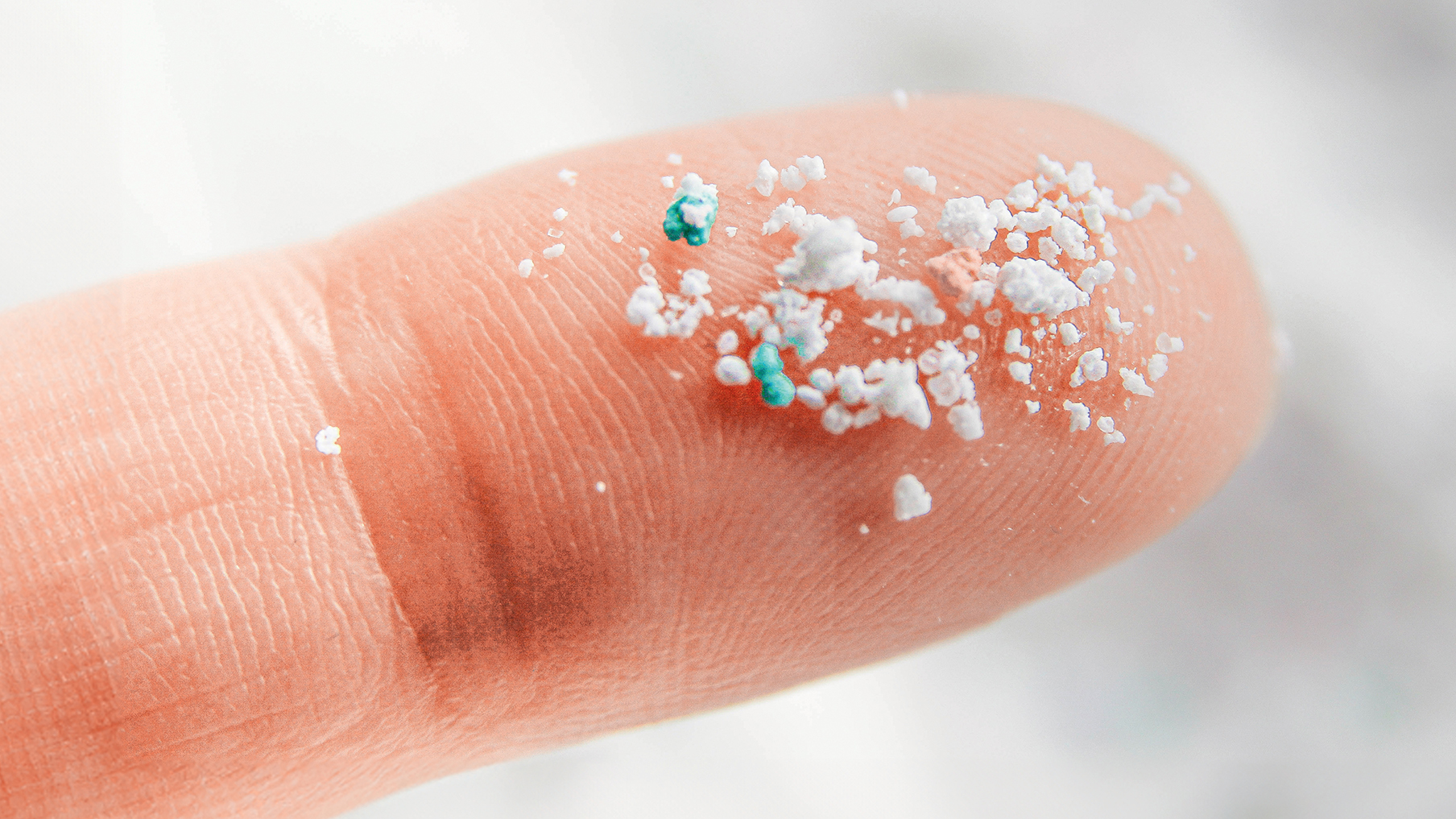Plastic pollution is everywhere. Extremely small pieces of plastic smaller than your fingernail, known as microplastics, have been found on top of Mount Everest and in deep ocean trenches. But, perhaps what is most alarming is that in recent years, microplastics have been infiltrating our bodies and been found in human lungs, hearts, brain tissue, blood, placentas and breast milk.
But how? It’s due to the difficult disposal of consumer products and industrial waste. Once in the soil, water and air, microplastics travel up the food chain where we can ingest them. Although they get excreted, they can still cause health issues. This is because the chemicals used to make plastics can attract other toxic chemicals that stick onto the surface of plastic particles. It’s possible that the horrid stuff being transported is being transferred into our bodies.
Where do they come from?
Microplastics can originate from various sources, including synthetic clothing, plastic packaging, tyres, paints, artificial turf, and even some personal care products. In the UK, the most common types are microfibres which often shed from synthetic clothing during washing – and fragments – pieces of larger plastic items, which have broken down.
Big disclaimer, remember that the toxicity of a substance depends on dose. So, the key is to minimise exposure to microplastics and the synthetic chemicals in and on those particles. The amount of toxic chemicals you are exposed to (called your toxic load) won’t ever be zero, but by simplifying your beauty routine, household cleaning rituals and shopping habits, you can reduce your toxic load to a more manageable level with fewer ingredients at lower doses.
Be plastic clever
It’s important to emphasise that plastic isn’t inherently bad. It’s a versatile, strong, flexible and durable material. Plus, it’s essential for medical devices and equipment. But it’s essential that it’s well designed and disposed of correctly.
Some of the biggest, less visible, sources of microplastic pollution need to be addressed and better regulated. These include car tyres, synthetic textiles, paint and fertilisers made from sewage sludge. By transforming how our stuff is manufactured, the use of harmful plastic chemicals and waste from unnecessary single–use plastic can be avoided.
Plastic pollution solutions need to be inclusive and accessible for all. A lot of environmental policies and campaigns overlook the daily needs of disabled people. Eco–ableism (non–disabled environmental activists and policymakers failing to acknowledge that many climate actions and policies negatively impact disabled people) is a real problem and leads to disability injustice. Positive action includes calling for the universal design of reusable products, so they are usable and affordable for everyone.

Turning the tide
When it comes to the environmental impact, a report by charity WWF (World Wildlife Fund) predicts that plastic production could more than double by 2040, quadrupling ocean plastic debris by 2050. Jenna Jambeck, an environmental engineer at the University of Georgia and a world expert on plastic pollution, calculated that in 2010, eight million tonnes of plastic waste entered the ocean from sources on land. That's equivalent to the aweight of around 650,000 double decker buses. Already, more than 170 trillion plastic particles are floating in the ocean.
More than 100 nations are negotiating a UN–backed plastics treaty to speed up the phase–out of polluting plastic production. As consumers, it’s important to call for change, too. With strong political will, innovative green chemistry (the design of chemical products and processes that reduce or eliminate the use of hazardous substances) could be scaled up to replace plastic with ingredients that are safer and healthier for both people and planet. Watch this space.
sensible swaps
While living a totally plastic–free life is unrealistic, here are some ways to cut down, because small, affordable changes are more convenient and easier to maintain.
1. CLOTHING
Natural fibres such as organic cotton and wool won’t release plastic microfibres during a wash. But fast fashion items are often made from synthetic plastics (including most ‘vegan’ leather). Consider putting these fabrics inside a Guppyfriend bag when washing-and be sure to put the captured fibres in the bin, not down the drain. As microplastics can be found in soil and house dust, leave outdoor shoes at the door and wipe away dust with a damp cloth on a weekly basis.
2. SKINCARE
Using bars of soap, shampoo, conditioner and deodorant will massively cut the number of plastic bottles in your bathroom cabinet.
3. GLITTER
These shiny microplastics can be harmful once they wash down the plughole. Even if you opt for ‘eco’ glitter products, be sure to wipe them off after use and dispose of them in the bin.
4. SANITARY PRODUCTS
Single–use period pads can contain up to 90 per cent plastic. Try Wuka’s washable period and incontinence pants, or reusable DAME tampon applicators. For babies, Kit & Kin offer plant-based nappies.
5. FOOD AND DRINK
Instead of cling film, use foil, which is more easily recycled. Better still, invest in Pyrex dishes or steel tiffins for on–the–go lunches. Avoid heating food in plastic containers as heat causes plastic chemicals to migrate into your meal. When it comes to drinks, opt for a refillable stainless steel water bottle, instead of plastic. If you fancy a cuppa, buy compostable tea bags made from cellulose, not nylon. And if you want to filter tap water, consider refill schemes that reduce wasteful packaging.
6. HOUSEHOLD CLEANING PRODUCTS
Declutter the spray bottles under the kitchen sink and replenish stocks using refill capsules from OceanSaver.
7. CHEWING GUM
Most gum contains a synthetic gum base, which doesn’t easily degrade. Plant-based alternatives include Nuud and Chewsy.
8. CARRIER BAGS
Take longer-lasting cloth bags with you to the shops so you won’t need plastic ones – and for supermarket home deliveries, tick the ‘plastic bag-free’ packing option when you check out.
9. WIPES
Even plastic-free and so-called biodegradable throwaway wipes can still clog up sewers. Try using washable cloth wipes or flannels instead.
Photo: Erlantz Pérez Rodríguez/Getty Images; Pally/Alamy Stock Photo





